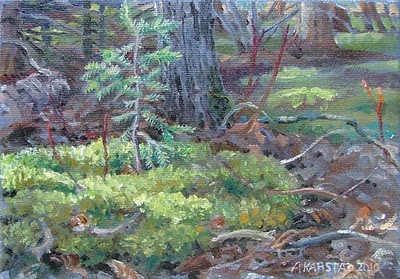Qu'Apelle River Valley (oil on canvas 5 x 7 in.) SOLD!

29 May finds us driving narrow, winding highway 56 along the north shore of Echo Lake, one of the chain named "Fishing Lakes" on the Qu'Apelle River in Saskatchewan. We have just left the town of Fort Qu'Apelle where we crossed the small Qu'Apelle River on a rather insignificant bridge, and followed Hwy 56 up along the side of the steep valley in the rain. The lake was so grey with rain that we could hardly see the distant south shore. Below us on the south side the roofs of houses peek from among the tops of trees on the steep slope down to the lake, and above us on the north side the pleated hills rise up against the clouds with patches of willows and aspens in their pockets and bushes in their creases. A few homesteads nestle in the upper valley folds, luxuriating in the rampant growth of bright green grass, fed by the generous rains of the past week, and before that, from two heavy spring snowfalls. We have pulled into the access lane of a property that


















